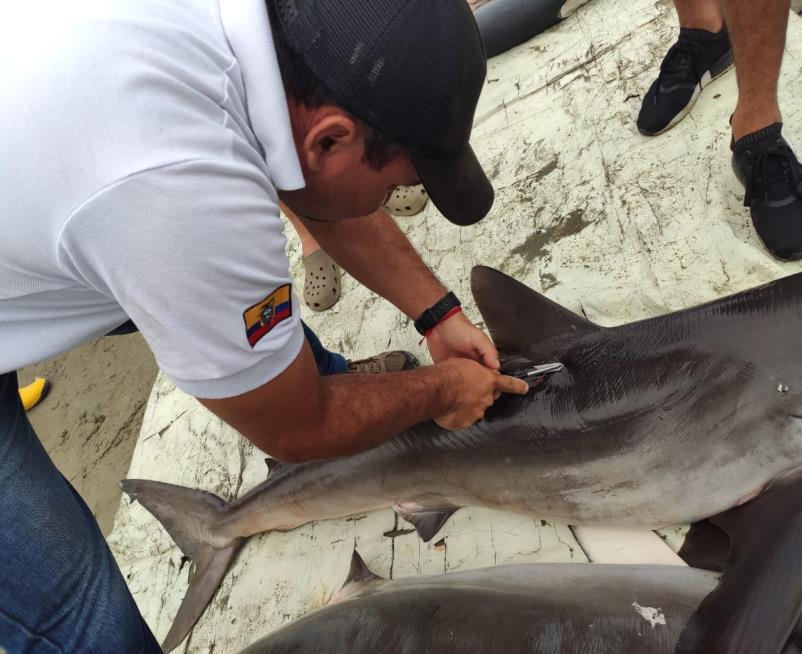Angela Patricia Palomino Gaviria
Smooth hammerhead shark (Sphyrna zygaena) is the fourth species that most exploited in Ecuador, and the third most landed in Peru. Therefore, it is very important to get scientific records, which facilitate the creation of a baseline of human interactions with S. zygaena on the coast of Ecuador, and of Peru, including the oceanic islands. This research has as aims, establish, through the placement of satellite tags, the migratory patterns of S. zygaena in the Tropical Eastern Pacific region (TEP), with particular emphasis on the spatial distribution between the coastal waters of Ecuador and Peru. Determine what biological reasons generate the spatial patterns, such as reproduction and feeding, and link them with their different stages of life. Compile relevant information for identifying priority conservation areas and for the improvement of the national action plan for the conservation and management of sharks of Ecuador (PAT-EC), and Peru (PAN - Tiburón Peru).

External tagging.
The challenge of studying some marine species, is the difficulty of obtaining information about their biology and ecology due to their behavior, making certain methods of studies impossible and restricting the type of research. In some cases, such as rays and sharks, the use of remote sensors as additional study tools combining with different research methodologies has facilitated the study of these marine animals.
The target species of this research is an example of lack of information in its ecology, obtaining few relevant data only from fishery data, which is not enough and is not recommended for a shark species with a low reproductive rate, which is currently vulnerable by fishing pressure. Therefore, to improve the understanding of the behavior and habitat use of this species in its different stages of life, in this project the satellite biotelemetry will be used. The detection range will depend on the times that the sharks come to the surface with the fin and send the data to the satellite.
The smooth hammerhead shark Sphyrna zygaena is one of the shark species most fished both in Ecuador and Peru. It is classified as vulnerable (VU) on the IUCN Red List and included in Appendix 2 of CITES. Although Ecuador has placed limits on the harvesting of hammerhead sharks in general, it is thought that the population moves along the continental shelf between Ecuador and Peru, where S. zygaena is also considered one of the most important commercial elasmobranch species.
Almost nothing is known globally about the spatial ecology of the threatened smooth hammerhead shark, yet it is heavily fished in the Eastern Pacific by artisanal fleets from Ecuador, Peru and even as far south as northern Chile. Given the size structure of landings, it is thought that pupping and nursery grounds exist in southern Ecuador and northern Peru. Clearly, there is an urgent need establish the connectivity between the two countries for this species, and to streamline conservation measures with a population focus rather than individual national efforts.
In particular, we will link their movements and residency between key locations with their different life stages, and combine with fisheries data to analyse the need for increased protection measures, especially where scarce management measures currently exist.